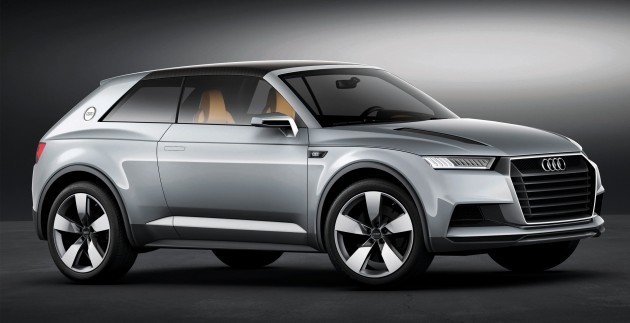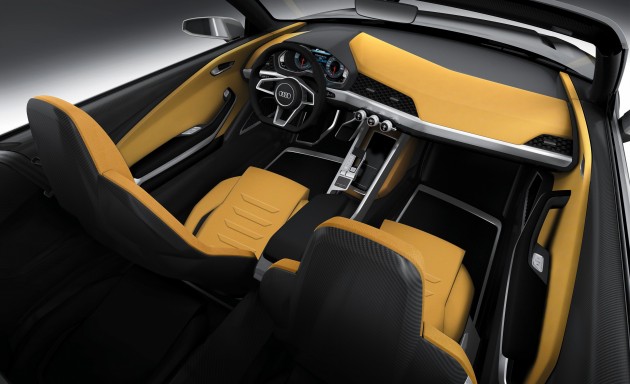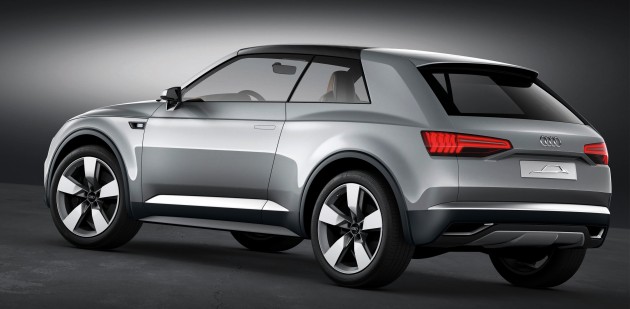It’s called the Crosslane Coupe Concept, and it’s a hybrid study by Audi, one which provides pointers into the design language that will shape Ingolstadt’s future Q models.
The Paris debutant is a 2+2-seater measuring 4.21 metres long, 1.88 metres wide and 1.51 metres high, with a wheelbase of 2.56 metres. Key design features include the utilisation of a Multimaterial Space Frame, which is made up of three materials – aluminium, carbon fibre-reinforced polymer (CFRP) and glass fibre-reinforced polymer (GFRP).
There’s a removable roof, where the element comprises two CFRP shells and weighs slightly less than 10 kg. The process of removal is simple enough – it’s unlatched by means of an electric drive, and can be placed over the load area of the vehicle. Indeed, lightness is the buzzword with this one – the Crosslane has an unladen weight of about 1,390 kg, and this includes the large lithium-ion battery.
The dual-mode three-cylinder petrol/electric vehicle also introduces a three-cylinder 1.5-litre TFSI engine, which works with two electric motors to deliver 177 PS. By itself, the purpose-developed mill delivers 130 PS and 200 Nm of twist, and the unit is coupled to an electric motor, offering 68 PS and 210 Nm, which acts primarily as a starter and an alternator.
Meanwhile, electrical traction is provided by the second electric motor, which has 116 PS and 250 Nm, and a single-stage transmission makes it possible to connect the combustion engine complete with alternator to the remainder of the drivetrain by means of a claw clutch. Performance figures for the Crosslane Coupé include a 0-100 km/h time of 8.6 seconds (9.8 seconds in pure electric mode) and a 182 km/h top speed.
On tap are different operating modes – from 0 up to 55 km/h, drive power is supplied solely by the second electric motor, which is primarily juiced by the 17.4 kWh lithium-ion battery on call. It’s good enough to offer an operating range of around 85 km in electric mode.
In serial mode, the combustion engine and the alternator produce electrical energy to support, relieve or substitute the battery should it be discharged – from 55 km/h on, the drive system allows the engine together with the alternator to couple to the drivetrain. Above speeds of 129 km/h, the three-cylinder engine becomes the main drive source, but the first electric motor is able to provide support if required.
The interior follows on the exterior’s design cues, and the dominant cabin material is CFRP, which is used in a number of different variations, slightly lighter in colour in some areas and darker in others, the effect achieved by the use of different clear coat applications. Aluminium and GFRP are also to be found, the latter making up the vehicle floor, for example.
The Crosslane also introduces new online services under the Audi connect umbrella, in this case ensuring continuous connectivity to the Internet community, be it via Twitter, Facebook or by sending photos and videos recorded on the road.












0 comments:
Post a Comment